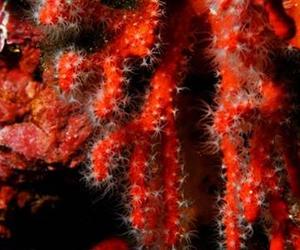Nipe-Sagua-Baracoa, an example of global biodiversity
- Submitted by: Luis Manuel Mazorra
- Science and Technology
- 03 / 18 / 2012

One of the 34 regions of the planet with greater variety and more biological amenazadaque is included in the Insular Caribbean mountain system is the Nipe-Sagua-Baracoa located in eastern Cuba, also called "hot spot".
These mountains are distinguished by their water resources and wildlife are well preserved and for hosting one of the main centers of biodiversity and endemism in the region bordered by the Caribbean Sea, as the poet Nicolas Guillen in his verses, "also called Caribbean ".
These "points", also called hotspots, were identified by Conservation International (CI, acronym in English), a private, nonprofit, founded in 1987, to maintain the natural heritage of land and future generations to thrive spiritually culturally and economically.
To select these areas, IC took into account two criteria: that such points containing at least 0.5 percent of the 300 000 plant species endemic in the world, and have lost over 70 percent of its primary vegetation.
Such requirements complies easily the the Nipe-Sagua-Baracoa, also assessed as a priority of the 200 districts worldwide to be stored at the global level, according to the geographer José Luis Gerhartz, World Wide Fund for Nature (WWF-Canada).
The area saved to only seven percent of Cuba's surface, the greater diversity of landscapes and vegetation types of the Caribbean islands and includes the Biosphere Reserve Frijol, and within this, the river basin of the same name and Alejandro de Humboldt National Park, about 70 000 hectares, declared World Heritage Site of Nature.
Among the priceless treasures of the massif are the largest freshwater reserves of Cuba, better preserved than those flowing from the Amazon, according to experts, including the late Cuban scientist Antonio Núñez Jiménez.
The fourth discoverer of Cuba wrote that the rain forests of the basin of the Toa, the Nipe saws, Sagua de Baracoa Tánamo and constitute the largest manufacturer of water to Cuba, with tropical cyclones that hit.
These mountains are the most rugged of the island, extending from the heights of Nipe, in the province of Holguin, to the Terrazas de Maisi, Guantanamo, and are also important from the point of view, to cherish the most extensive plantations Coffee of the island, and only significant for the production of cocoa and coconut.
But their value is further justified because they keep some of the most important archaeological sites in Cuba: the Toa river basin, the most mighty of the archipelago, and the city of Baracoa, the second founded in America after 1492.
In the more undulating Cuban area are also the last stronghold of species to the brink of extinction and the first center of evolution of the flora of Cuba, besides having a biosphere reserve, strategic minerals and most importantly, about 50 settlements populations in the basins of its major rivers.
Comments